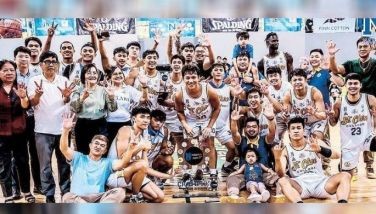Filipinos in America - At Random
When Filipinos began to migrate to the US in considerable numbers (in the early decades of the 20th century), they almost invariably came from poor families and had little schooling. They settled in Hawaii or in California or Oregon and became seasonal workers in farms or in the salmon factories. Some became waiters, cooks, or "bellhops". They lived in squalor, both physical and moral. They belonged to the dregs of American society. Their plight is movingly described in Bulosan's America is in the heart.
After World War II, beginning with the 1950s and 1960s, a different type of Filipinos migrated to the US in ever larger numbers. An interesting volume has just been published which in effect is a composite portrait of the Filipinos as they are today in the US and Canada. It is a magazine-type volume in large format, 272 pages of text exclusive of advertisements, printed in large type on coated paper, profusely illustrated with photographs. The title: FIL-AM: THE PHILIPPINE AMERICAN EXPERIENCE (Pueblo Inc. 1999). The editor, Alfred A. Yuson.
These articles are written by Filipinos about themselves and their families, or about other Filipinos. We get a composite picture of Filipinos in America as writers, painters, musicians, craftsmen, businessmen, chefs, Filipinos in theatre, in radio, in film-editing. Or about their recreational activities like deep-sea fishing. Or how they feel when they give up their identity as Filipinos and become American citizens.
Most of the articles are written by those residing in America. But some are by local residents. For example, an article on Filipino restaurants in the US is by Doreen Fernandez. On other subjects other articles are by Carmen Guerrero Nakpil, F. Sionil Jose, ex-President Fidel Ramos, Blas Ople, Alfred Yuson, Alberto Florentino, and others. One article is by a prominent American (Beth Day Romulo) on why she prefers to remain in Manila.
This is not only an interesting volume but also an important one. Without pretending to be one, it is in effect a study of Philippine culture when transported overseas. As such, this volume should be of interest to students of Philippine culture, and no library could afford to be without a copy for its Filipiniana collection.
Unfortunately, the importance and nature of the book is obscured by the presentation. Immediately inside the cover are pages and pages of advertisements, giving the impression that this is another trade or travel magazine, quickly disposable into the trash can. It is only after several pages of ads that one comes to the title page. And there is no table of contents.
These external flaws, unfortunate as they are, should not prevent discriminating readers from perceiving the book's value. The price is not indicated, but inquiries are invited to the editor, Alfred A. Yuson, 62 Cabbage Street, Valle Verde 5, 1605 Pasig, Metro Manila. Tel./FAX: (632) 634-1423. e-mail: [email protected].
- Latest
- Trending





























